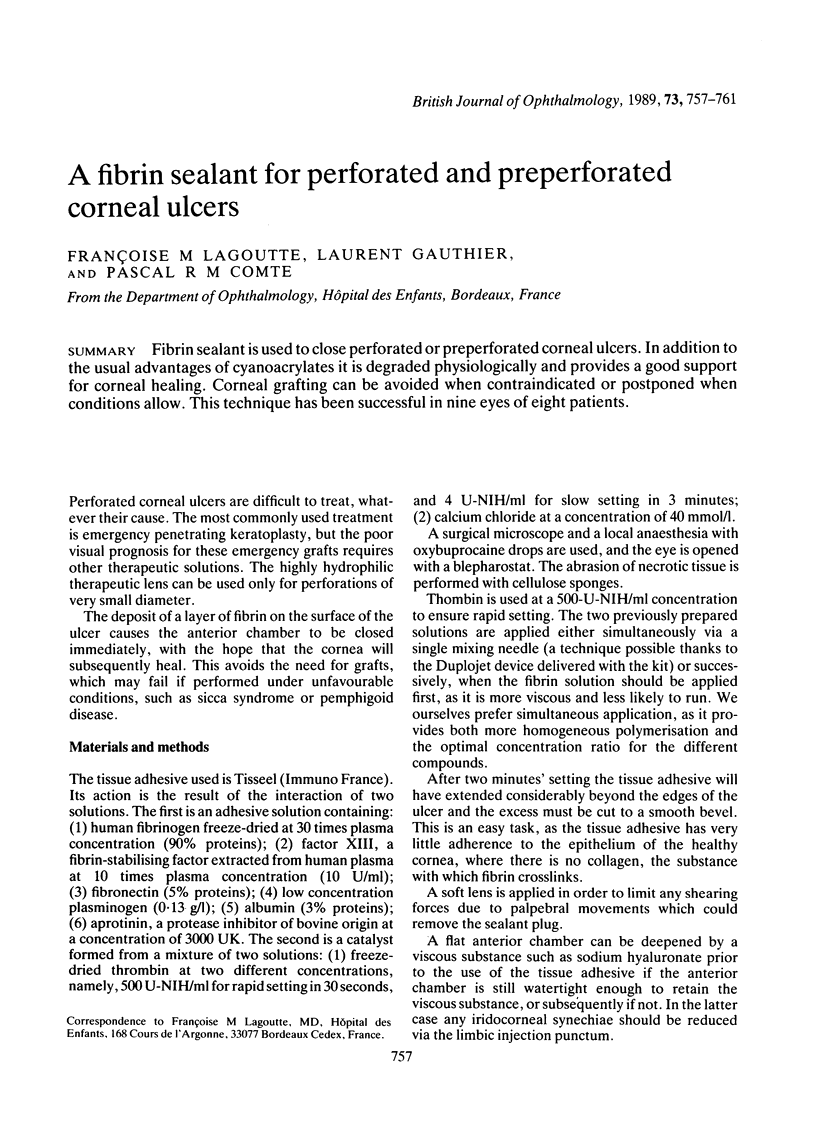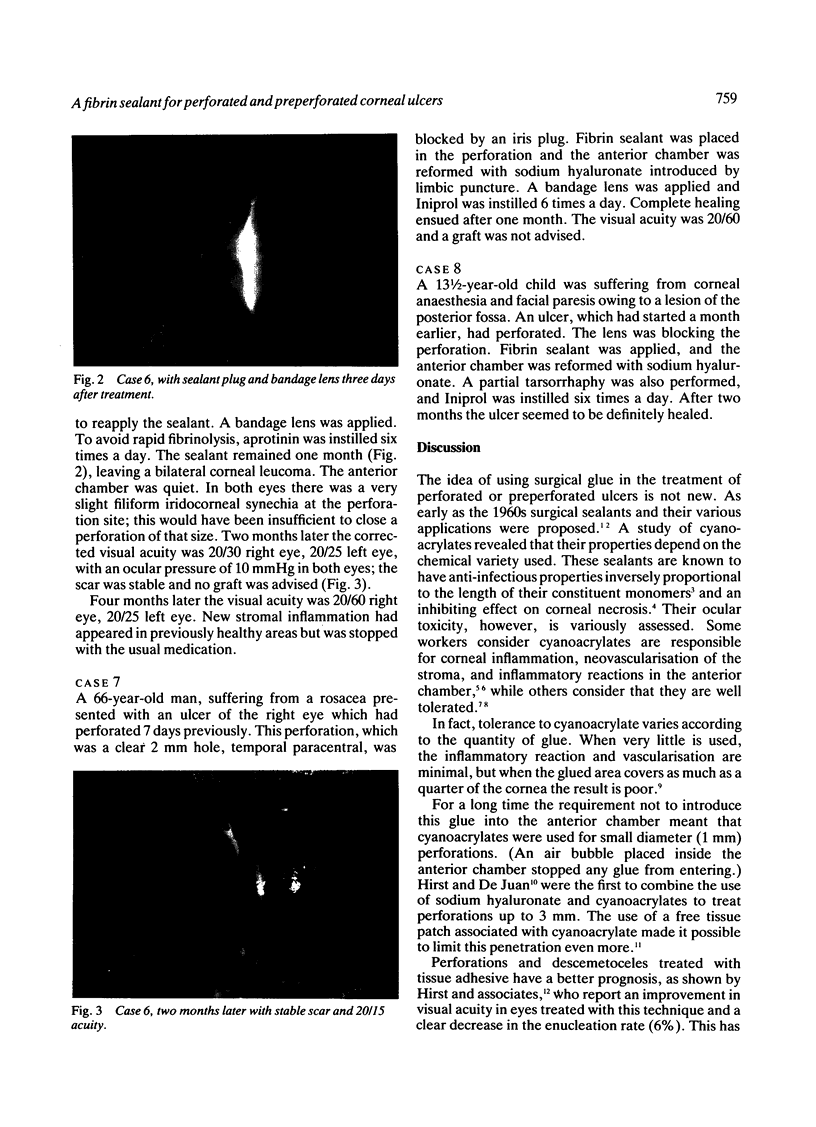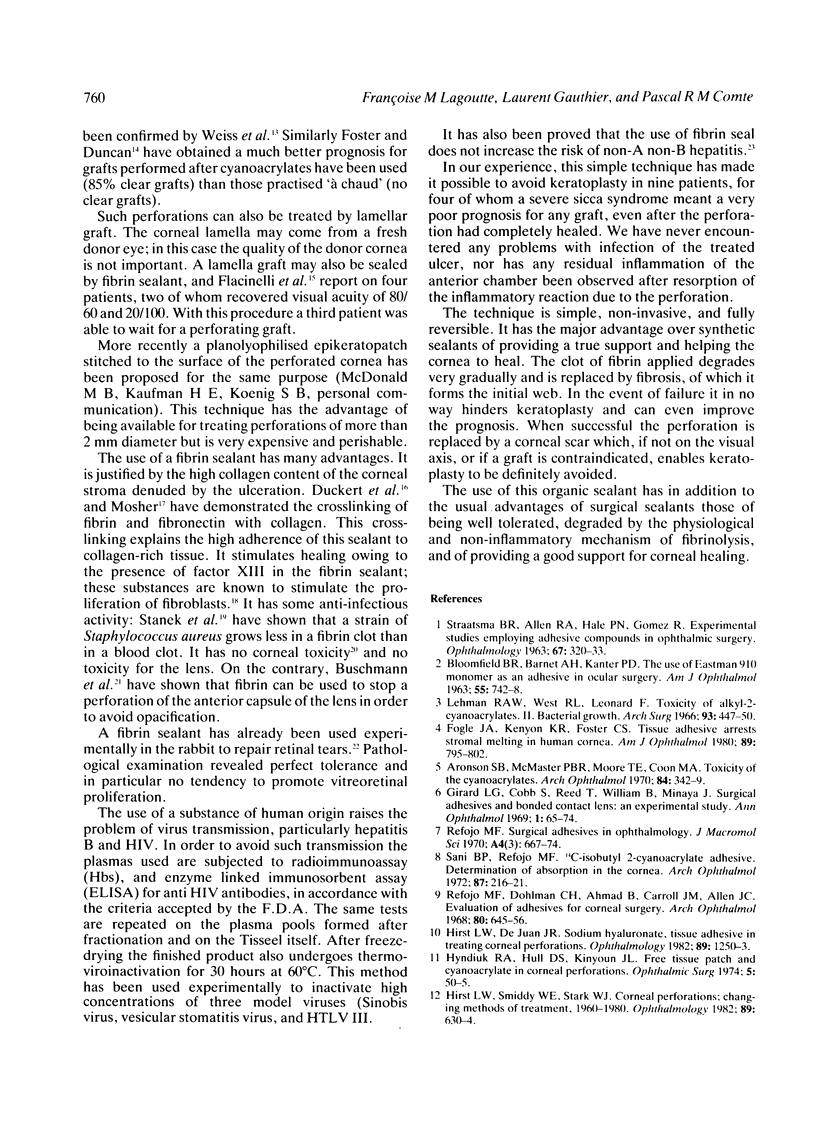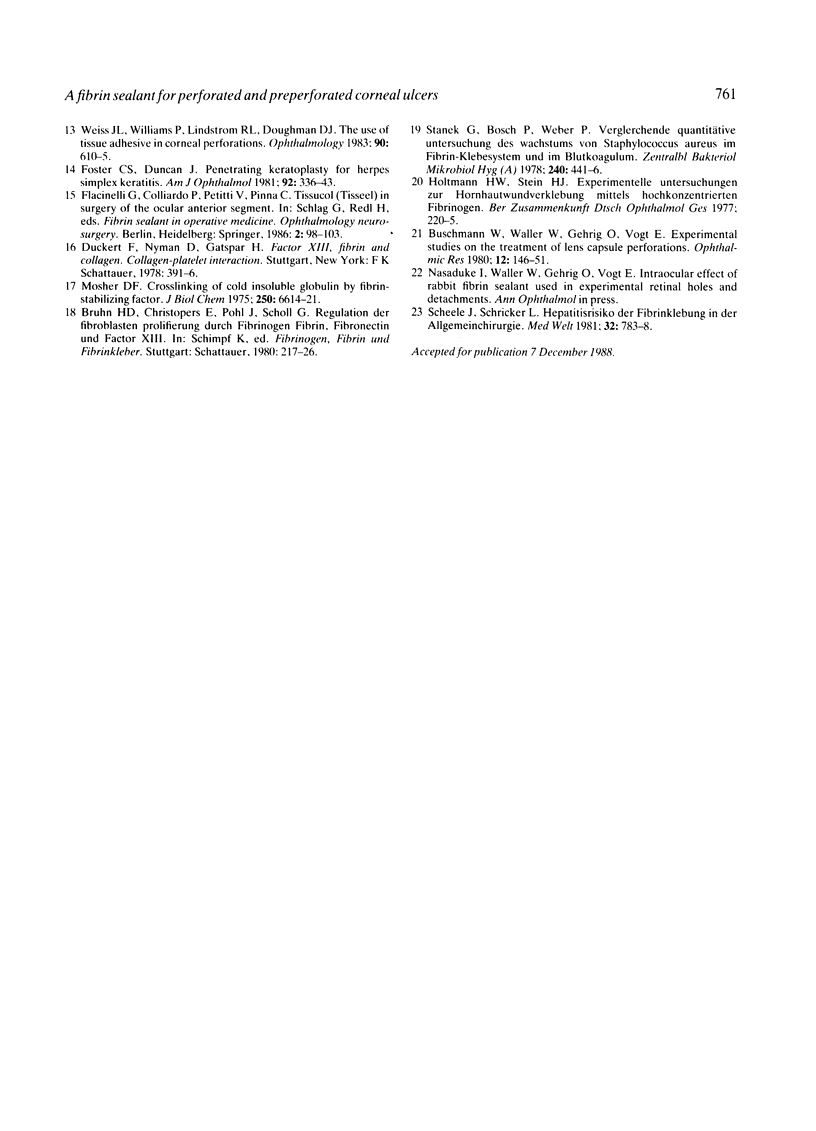Abstract
Fibrin sealant is used to close perforated or preperforated corneal ulcers. In addition to the usual advantages of cyanoacrylates it is degraded physiologically and provides a good support for corneal healing. Corneal grafting can be avoided when contraindicated or postponed when conditions allow. This technique has been successful in nine eyes of eight patients.
Full text
PDF




Images in this article
Selected References
These references are in PubMed. This may not be the complete list of references from this article.
- Aronson S. B., McMaster P. R., Moore T. E., Jr, Coon M. A. Toxicity of the cyanoacrylates. Arch Ophthalmol. 1970 Sep;84(3):342–349. doi: 10.1001/archopht.1970.00990040344014. [DOI] [PubMed] [Google Scholar]
- BLOOMFIELD S., BARNERT A. H., KANTER P. D. The use of Eastman 910 monomer as an adhesive in ocular surgery. I. Biologic effects on ocular tissues. Am J Ophthalmol. 1963 Apr;55:742–748. [PubMed] [Google Scholar]
- Fogle J. A., Kenyon K. R., Foster C. S. Tissue adhesive arrests stromal melting in the human cornea. Am J Ophthalmol. 1980 Jun;89(6):795–802. doi: 10.1016/0002-9394(80)90168-3. [DOI] [PubMed] [Google Scholar]
- Foster C. S., Duncan J. Penetrating keratoplasty for herpes simplex keratitis. Am J Ophthalmol. 1981 Sep;92(3):336–343. doi: 10.1016/0002-9394(81)90522-5. [DOI] [PubMed] [Google Scholar]
- Hirst L. W., De Juan E., Jr Sodium hyaluronate and tissue adhesive in treating corneal perforations. Ophthalmology. 1982 Nov;89(11):1250–1253. doi: 10.1016/s0161-6420(82)34649-7. [DOI] [PubMed] [Google Scholar]
- Hirst L. W., Smiddy W. E., Stark W. J. Corneal perforations. Changing methods of treatment, 1960--1980. Ophthalmology. 1982 Jun;89(6):630–635. [PubMed] [Google Scholar]
- Hyndiuk R. A., Hull D. S., Kinyoun J. L. Free tissue patch and cyanoacrylate in corneal perforations. Ophthalmic Surg. 1974 Summer;5(2):50–55. [PubMed] [Google Scholar]
- Lehman R. A., West R. L., Leonard F. Toxicity of alkyl 2-cyanoacrylates. II. Bacterial growth. Arch Surg. 1966 Sep;93(3):447–450. doi: 10.1001/archsurg.1966.01330030077017. [DOI] [PubMed] [Google Scholar]
- Mosher D. F. Cross-linking of cold-insoluble globulin by fibrin-stabilizing factor. J Biol Chem. 1975 Aug 25;250(16):6614–6621. [PubMed] [Google Scholar]
- Refojo M. F., Dohlman C. H., Ahmad B., Carroll J. M., Allen J. C. Evaluation of adhesives for corneal surgery. Arch Ophthalmol. 1968 Nov;80(5):645–656. doi: 10.1001/archopht.1968.00980050647013. [DOI] [PubMed] [Google Scholar]
- STRAATSMA B. R., ALLEN R. A., HALE P. N., GOMEZ R. Experimental studies employing adhesive compounds in ophthalmic surgery. Trans Am Acad Ophthalmol Otolaryngol. 1963 May-Jun;67:320–334. [PubMed] [Google Scholar]
- Sani B. P., Refojo M. F. b 14 C-isobutyl 2-cyanoacrylate adhesive. Determination of absorption in the cornea. Arch Ophthalmol. 1972 Feb;87(2):216–221. doi: 10.1001/archopht.1972.01000020218020. [DOI] [PubMed] [Google Scholar]
- Scheele J., Schricker K. T., Goy R. D., Lampe I., Panis R. Hepatitisrisiko der Fibrinklebung in der Allgemeinchirurgie. Med Welt. 1981 May 15;32(20):783–788. [PubMed] [Google Scholar]
- Stanek G., Bösch P., Weber P. Vergleichende quantitative Untersuchung des Wachstums von Staphylococcus aureus im Fibrin-Klebesystem und im Blutkoagulum. Zentralbl Bakteriol Orig A. 1978 Jun;240(4):441–446. [PubMed] [Google Scholar]
- Weiss J. L., Williams P., Lindstrom R. L., Doughman D. J. The use of tissue adhesive in corneal perforations. Ophthalmology. 1983 Jun;90(6):610–615. doi: 10.1016/s0161-6420(83)34508-5. [DOI] [PubMed] [Google Scholar]





